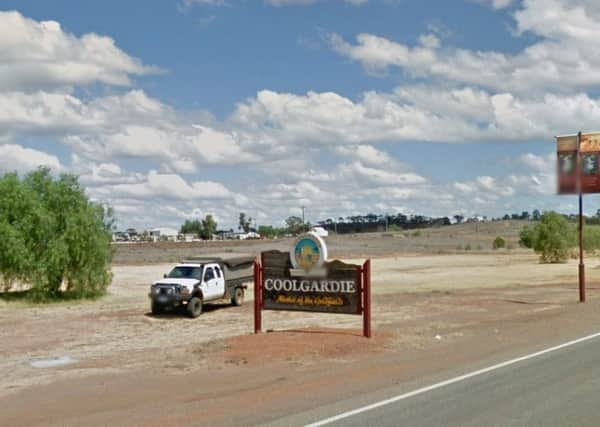When John Mills hit the mother lode in the ‘Golden Hole’ of Londonderry


For John struck lucky, not in California or the Klondike, but on the lesser known gold rush of the Western Australian outback.
He was amongst six prospectors who hit the mother lode near Coolgardie in 1894. He christened the place Londonderry after his native home.
Advertisement
Hide AdAdvertisement
Hide AdIt’s one of the many ‘Londonderrys’ and ‘Derrys’ scattered throughout the white settler colonies of the world and it features prominently in the Foyle Civic Trust’s ‘A Directory of the Derrys and Londonderrys Around the World,’ which can now be found on their new website.But it’s now a ghost town sadly obscured in the bush off the main Coolgardie Esperance highway, not far from the Australian mining capital of Kalgoorlie. There follows a reproduction of the Foyle Civic Trust’s take on the John Mills tale.


Londonderry is a ghost town in Western Australia, located 14 kilometres South West of Coolgardie in the Goldfields-Esperance region.
It is in the eastern goldfields, just south of the Coolgardie-Norseman railway.
Gold was discovered here in early 1894 by a party of six prospectors who named the find after the home town of one of the prospectors.
Advertisement
Hide AdAdvertisement
Hide AdIt was a rich find, which was taken over by Lord Fingall in September 1892, but the gold soon petered out and caused a massive financial scandal.


A town site was gazetted in 1895. It is now abandoned.
The Londonderry find was made on May 7 by a prospecting party consisting of Messrs. Carter, Dawson, Mills, Gardiner, Elliot and Huxley, who had been out many months without a find and were on their way back to Coolgardie thoroughly disillusioned.
Quite by accident, rich quartz was picked up by one of the party, John Mills.
He returned to the camp carrying several good specimens and next morning they moved to the site of his discovery, losing no time to peg the ground.


Advertisement
Hide AdAdvertisement
Hide AdThe tenement was named Londonderry after Mills’ home town in Ireland for it was the custom to give a name to every lease.
After a brief search the outcrop of a reef was exposed, from which during the first three or four days they took between 4,000 and 5,000 ounces.
Over the course of three months what became known as the ‘Golden Hole’ yielded about 8,000 ounces, worth about £30,000. Today it is a ghost town.
The party had been storing the treasure in their tent, taking it in turns to stay up all night, suitably armed in case of robbery.
Advertisement
Hide AdAdvertisement
Hide AdBy the end of the third week of June 1894, they decided the risk was becoming too great, and arranged to take the treasure into town, covered with a load of firewood.
On Saturday, June 23, the Union Bank in Coolgardie weighed 4,280 ounces of gold from the mine and some of the finest specimens were put on display.
The quantity of gold would now be worth in excess of 10,000,000 Australian dollars.
Imagine keeping that in a tent! It was the kind of discovery, which is the dream of every prospector, but the reward of very few.
The financial scandal that arose from this find resulted in the publication of a book called ‘Londonderry, the Golden Hole,’ by Austin Sprake.